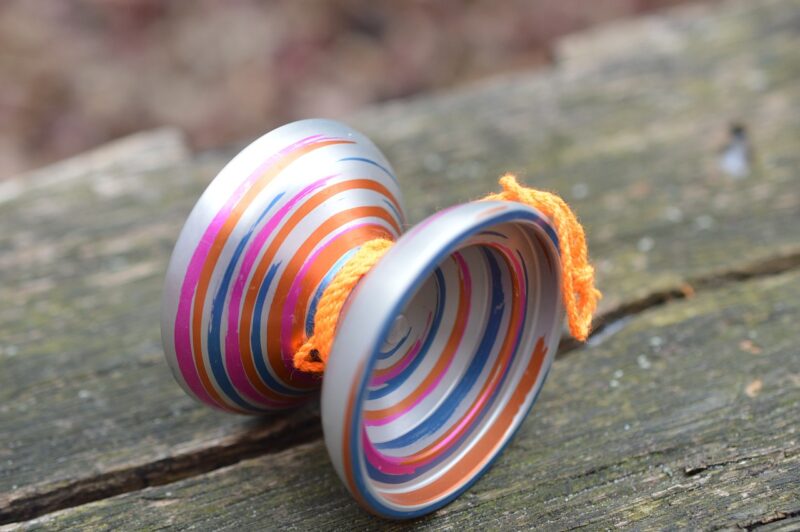The Strange Disappearance of Popular Yo-Yo Brands in the 2000s
November 12, 2024

In the vibrant toy market of the 1990s and early 2000s, few toys captured the imagination quite like the yo-yo. Once regarded as a staple of childhood, it seemed to fade into obscurity by the mid-2000s, giving rise to curiosity about the factors behind this sudden disappearance of popular brands. This article delves into the rise and fall of yo-yo brands, exploring cultural influences, market dynamics, and the shift in toy preferences.
The Yo-Yo Boom of the 1990s
The 1990s were a golden age for yo-yos, spurred into popularity by media exposure and brand competition. Companies like Duncan and Yomega produced high-quality models that attracted both children and adults. With the rise of competitive yo-yoing, the toy became more than just a pastime; it evolved into a sport. Yo-yo championships, such as those hosted by the American Yo-Yo Association, garnered thousands of eager participants and enthusiastic spectators.
This resurgence in yo-yo popularity was marked by:
- Television Shows and Movies: Numerous shows featured yo-yo tricks and demonstrations, introducing the toy to a wider audience. The media portrayal of skilled yo-yoers helped cement the toy’s status as a cultural phenomenon.
- Celebrity Endorsements: Popular figures, including athletes and musicians, showcased their skills in yo-yoing, further enthralling fans. Such endorsements effectively turned the yo-yo into a beloved cultural artifact.
- Innovative Designs: Brands began releasing new yo-yo designs, incorporating advanced technology and materials that catered to the demands of enthusiasts. The introduction of ball-bearing and unresponsive yo-yos greatly enhanced performance and playability, leading to a rise in consumer interest.
The 1990s were indeed a pivotal period for yo-yos, setting the stage for what many thought was an enduring trend.
The Shift in Attention: Why the Decline?
As the 2000s approached, several factors contributed to the decline of popular yo-yo brands, leading to their eventual disappearance.
- Changing Toy Trends: With the emergence of digital toys and video games, children’s preferences shifted dramatically. Interactive gaming and screen-based entertainment began dominating children’s playtime, leaving less room for traditional toys like yo-yos. The market began to favor toys that offered instant gratification and engagement, which contributed to the decline in sales for classic toys.
- Brand Saturation: The influx of numerous yo-yo brands during the 1990s led to a saturated market. New companies emerged, and the competition became fierce, making it challenging for iconic brands like Duncan and Yomega to maintain market relevance. Many smaller brands that could not compete in quality or marketing dwindled or went bankrupt, diminishing the overall presence of the yo-yo within the toy industry.
- Inconsistent Quality Control: As brands competed to deliver more designs at lower prices, quality control suffered. Consumers began to notice inconsistencies in performance and durability. As disappointment grew, many potential buyers moved on to other toys that provided better quality and reliability.
- Focus on Niche Markets: As brands dwindled in numbers, those remaining began focusing on niche markets. While this helped some brands cater to dedicated enthusiasts, it alienated casual users who had accounted for a significant portion of sales. The yo-yo became less accessible to the everyday child who once played with it during recess, driving further sales loss.
The combination of changing consumer habits, increased competition, and shifts in focus led to the decline of once-thriving yo-yo brands by the mid-2000s.
The Cultural Impact & Nostalgia
Despite the decline of yo-yo brands, the cultural impact of this iconic toy perspective continues to resonate. Millennials who experienced the yo-yo boom often recall fond memories associated with yo-yoing, helping to preserve a legacy that remains relevant.
This nostalgia paved the way for a resurgence in interest in the 2010s and beyond. The following factors contributed:
- Social Media and YouTube: With the rise of platforms like YouTube, users began sharing yo-yo tricks, tutorials, and competitions online. The accessibility of video content sparked interest among a new generation of yo-yo enthusiasts and rekindled the passions of former users eager to relive their childhood days.
- Revival of Classic Toys: The increasing interest in retro and nostalgic toys contributed to a small comeback for yo-yos, often marketed as vintage collectibles. Brands started re-releasing classic models and appealing to customers’ inherent desire for simpler times, driving renewed sales and brand recognition.
- Cultural Events and Competitions: The establishment of new competitions and yo-yo festivals kept the spirit of yo-yoing alive. These events not only brought together enthusiasts but also created opportunities for the toy to gain media coverage, sparking interest from the public once more.
Conclusion: The Yo-Yo’s Legacy
The strange disappearance of popular yo-yo brands in the 2000s can be attributed to several interconnected reasons, ranging from changing consumer trends to the saturation of the toy market. However, the nostalgic sentiments for this classic toy continue to resonate. The legacy of the yo-yo endures, supported by a community of enthusiasts and renewed market interest reflecting changing cultural attitudes.
The yo-yo’s journey is a reminder of how quickly preferences can shift, and how even the most beloved toys can fade into the background only to be revived by nostalgia and a new generation. As we look to the future, the yo-yo remains a symbol of creativity, skill, and the timeless joy of play, ensuring its place in both history and hearts for years to come.







